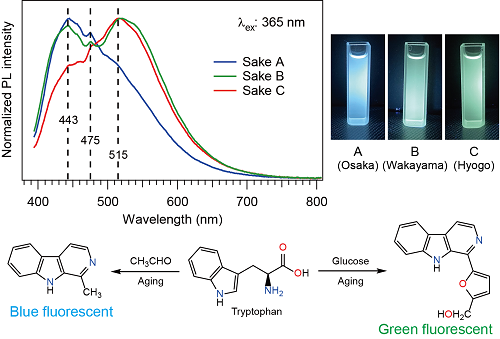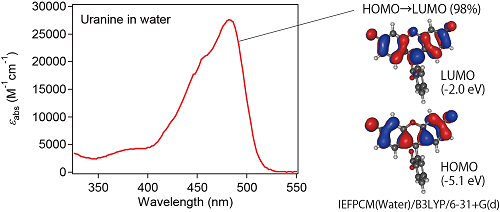
Research Topics of KPcL
These topics are the examples we investigate.
Spectroscopic study on Japanese alcohols

Sake is a Japanese traditional alcoholic liquor. They are made by more than 1,400 breweries in Japan and are chemically analized in detail for quality assurance and legal reasons. However, the photochemical research is not sufficient. We investigate spectroscopic analysis of sake and other japanese alcohols, e.g. shochu.
The above figure shows photoluminescence spectra of three kinds of sake A, B, and C, which are made in different breweries in Osaka, Wakayama, and Hyogo, respectively. Interestingly, the spectra have three identical bands at 443, 475, and 515 nm, and each sake has different relative intensities of the bands. For example, reaction of tryptophane with acetaldehyde affords a blue luminescent pyridoindole compound, and that with glucose affords a green luminescent π-extended pyridoindole compound (Murakami et al, 1978). We investigate the differences and commonalities of such compounds between sake brands.
Our related publication:
Theoretical investigations on photochemistry

We investigate photochemistry of organic dyes, other aromatic compounds, metal complexes, supramolecules, inorganic minerals, and so on, using quantum chemical calculations (e.g. MO, DFT) and/or molecular dynamics simulations. For example, the above figure shows DFT and TD-DFT calculations to understand the UV-vis absorption spectrum of uranine (fluorescein Na) in water.
Our related publications:
